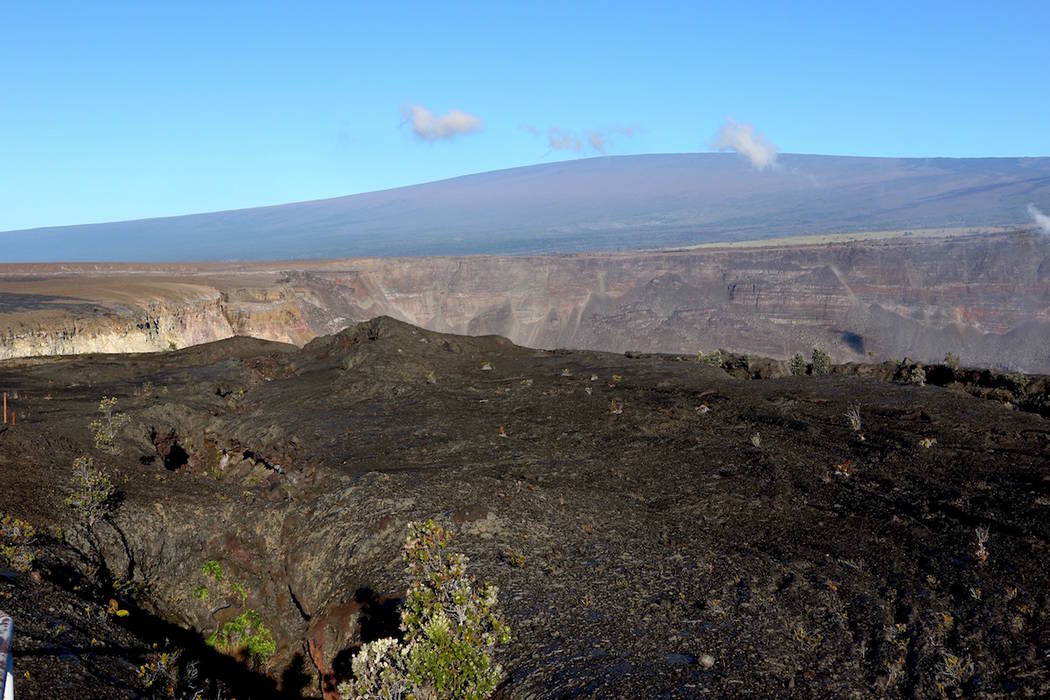Alert level increased at world’s largest volcano in Hawaii
HONOLULU — Federal officials raised the alert level Tuesday for the world’s largest active volcano, Hawaii’s Mauna Loa, which last erupted in 1984.
The U.S. Geological Survey changed the level from “normal” to “advisory” following a steady increase in earthquakes and ground swelling that began in March.
An eruption is not imminent, but scientists are closely monitoring Mauna Loa because of its reputation for “evolving very quickly” and sending lava far and wide, USGS research geophysicist Ingrid Johanson told The Associated Press in a phone interview last month.
“Lava can go from the rift down to the ocean on the west side of Mauna Loa on the order of a couple hours,” Johanson said. “The rate of the eruption is just really fast.”
Mauna Loa has erupted 33 times since 1843.
Its lava flows have stretched to the south and west coasts eight times and neared Hilo, on the east side, seven times. During its last eruption, lava flows came within 4.5 miles (7.2 kilometers) of Hilo, the Big Island’s largest city.
The alert level on Mauna Loa was last raised to advisory in 2015. A similar period of increased activity occurred around 2004, but the USGS Volcano Alert Level system was not yet in place at that time.
“Advisory” is the second of four alert levels and means scientists have detected elevated activity or unrest. The next level, “watch,” means there is heightened activity with more potential for eruption or that an eruption is ongoing but poses little threat. The highest level, “warning,” means a dangerous eruption is imminent or underway.
An alert-level change is not something the USGS does lightly, said Janet Babb, an agency geologist and spokeswoman. It must balance the need to keep people informed and the risk of causing panic. “A lot of discussion goes into it because it has ramifications,” Babb said.
Mauna Loa currently is experiencing 50 to 75 earthquakes a week, a steady increase since March when there was a pronounced change. And the bulging of the ground, known as deformation, indicates magma is entering the volcano’s plumbing system.
Yet gas emissions have been low and steady in recent months, and “that tells us that there isn’t magma rising to very shallow depths,” Johanson said.
And scientists would expect to see 50 to several hundred earthquakes per day — not per week — ahead of an eruption, USGS volcanologist and geologist Frank Trusdell said.
“It’s above background, but it isn’t the amount of earthquakes we would expect to see prior to an eruption,” Trusdell said.
Increased ground swelling is also happening on neighboring Kilauea volcano. Johanson said scientists are observing some of the highest rates of deformation ever recorded outside an eruptive period there.
More than 700 Big Island homes were destroyed and thousands of people were displaced when Kilauea began spewing lava in residential neighborhoods last year.

















